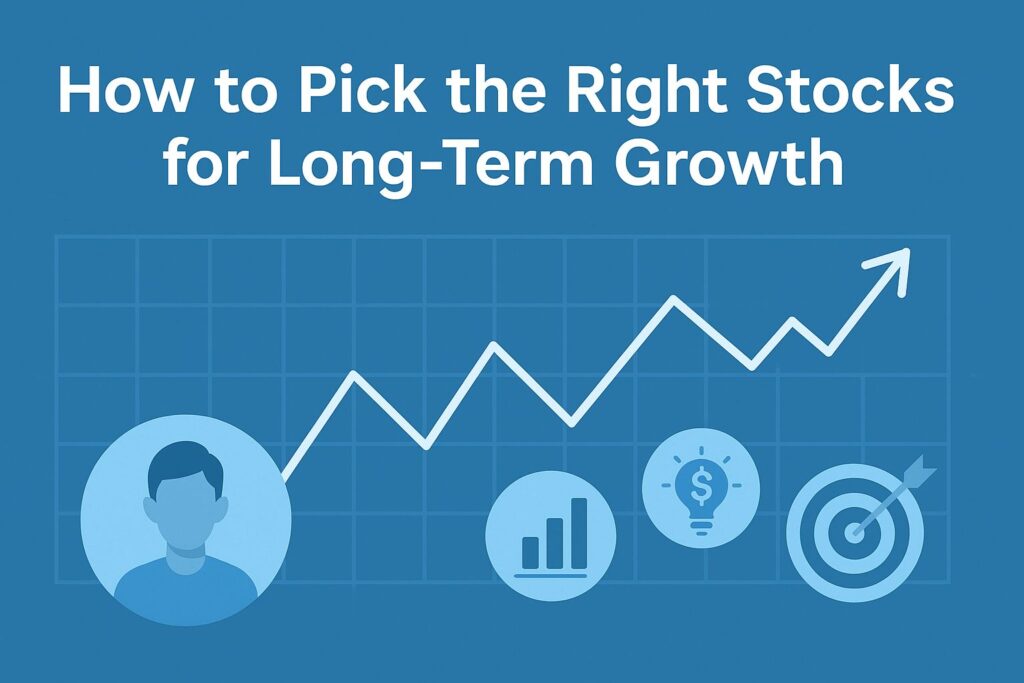The New Face of the 2026 Stock Market
In 2026, global investors are once again turning their attention to technology and more specifically, to AI stocks. After several years of volatility and uncertainty, artificial intelligence has evolved from a futuristic buzzword into a cornerstone of the global economy. From chipmakers and software developers to healthcare and finance, AI is now embedded in every major sector.
This article explores why AI stocks are rising in 2026, the underlying economic drivers, and what this trend means for investors. It aims to inform and educate readers about the current state of the AI driven market without offering investment recommendations.
- The Global Economic Context Behind AI’s Growth
The 2026 stock market is shaped by a combination of recovering post pandemic demand, digital transformation, and corporate efficiency drives. Businesses that adopted AI early are now reaping the benefits through automation, data optimization, and reduced operational costs.
Productivity and Profitability
According to data from multiple market research agencies, companies integrating AI into core operations report an average productivity increase of 25 % and a cost reduction of nearly 15 % compared with non AI competitors. These tangible financial advantages translate directly into improved earnings and investors are quick to notice.
Macroeconomic Stability and Technological Spending
While inflation pressures persist, governments and corporations are maintaining strong capital expenditures in technology. In 2026, AI infrastructure spending exceeded $1.9 trillion, highlighting a global consensus that machine learning and automation are not optional they are essential for competitiveness.
- The Major Players Powering the AI Boom
Nvidia: The Heart of AI Hardware
In 2026, Nvidia remains the undisputed leader in GPU manufacturing, supplying the chips that power both generative AI systems and enterprise level data centers. The company’s revenue continues to climb thanks to high demand for AI computing infrastructure.
Microsoft and OpenAI Collaboration
Microsoft’s integration of OpenAI’s technology into Office 365, Azure, and enterprise solutions has redefined workplace productivity. The collaboration symbolizes how large corporations use AI not just for innovation but also for monetization.
Google, Amazon, and the Cloud AI Race
Alphabet and Amazon are competing in developing the most efficient cloud based AI platforms. Google’s DeepMind division has achieved record breakthroughs in predictive analytics, while Amazon leverages AI for logistics, supply-chain efficiency, and e commerce personalization.
These industry giants together account for over 60 % of the AI market capitalization, reinforcing investor confidence in the sector.
- The Data Revolution: Why AI Became a Necessity
Modern economies run on data, and AI is the key to making sense of it. In 2026, global data creation surpasses 190 zettabytes. Humans alone cannot process this information efficiently, but machine learning algorithms can.
From Automation to Decision Intelligence
AI systems no longer perform repetitive tasks only they now predict consumer behavior, manage portfolios, detect fraud, and optimize manufacturing in real time. This paradigm shift transforms AI from a luxury innovation into an operational necessity.
Sector Specific Expansion
• Healthcare: Predictive AI improves early diagnosis accuracy by 40 %.
• Finance: Algorithmic trading and risk modeling reduce human error.
• Manufacturing: Autonomous robots improve production efficiency.
• Energy: AI optimizes grid management and renewable integration.
Each of these sectors contributes to the surge in AI stocks 2026, as revenue growth becomes tightly linked to artificial-intelligence adoption rates.
- Investor Sentiment: The “AI Momentum” Mindset
Investor psychology plays a significant role in every market cycle. In 2026, AI stocks are not merely an investment category; they represent optimism toward innovation.
FOMO – Fear of Missing Out
Social media platforms, finance influencers, and news headlines amplify the narrative that AI is “the next internet revolution.” Retail investors, encouraged by success stories from 2023 to 2025, continue to pour capital into AI related ETFs and equities.
Institutional Endorsement
Institutional investors and pension funds have also increased their AI exposure, diversifying away from traditional industrial assets. This influx of institutional money stabilizes valuations and provides long term growth potential.
- Financial Data Supporting the Surge
Recent data highlights why AI remains the most profitable sector in 2026:
• The S&P 500 AI Index has risen by 32 % year to date, outperforming all other sectors.
• AI related ETFs such as Global AI Leaders Fund and Smart Tech ETF have attracted record inflows.
• Semiconductor companies report a 40 % increase in year over year profits.
Such numbers reveal that the enthusiasm for AI is backed not just by hype but by measurable financial outcomes.6.
6. Key Factors Driving AI Stock Growth
- Corporate Demand for Efficiency
Businesses invest heavily in AI to reduce costs and boost accuracy, translating into rising profits and shareholder returns.
- Technological Breakthroughs
Advances in natural language processing, generative AI, and quantum computing have expanded real-world AI applications far beyond expectations.
- Governmental and Institutional Support
Governments worldwide now subsidize AI innovation. The United States, European Union, and South Korea offer tax incentives and research funding to maintain competitiveness.
Together, these factors form the foundation of the continued rise of AI stocks 2026.
- Expert Opinions and Market Outlook
Analysts from Goldman Sachs, Morgan Stanley, and ARK Invest converge on one key insight: AI is no longer an emerging technology it is infrastructure.
• Goldman Sachs projects that AI adoption will contribute an additional $7 trillion to global GDP by 2030.
• ARK Invest emphasizes the exponential nature of AI innovation, suggesting long term potential for sustained revenue growth.
While projections vary, consensus remains that AI’s role in the modern economy will continue expanding.
- Potential Risks and Limitations
Despite the enthusiasm, responsible investors recognize the risks associated with AI stocks.
Valuation Concerns
Many AI companies trade at high price to earnings ratios, prompting fears of overvaluation similar to the dot com bubble.
Regulatory Challenges
Governments are introducing stricter regulations concerning data privacy, intellectual property ownership, and algorithmic accountability. These can slow development or increase compliance costs.
Market Volatility
AI stocks tend to react strongly to quarterly reports and technological announcements, leading to short-term swings.
Ethical and Employment Considerations
Automation continues to replace traditional jobs, raising ethical debates and social pressures that may affect corporate reputations and policies.
Understanding these risks is crucial for maintaining perspective when analyzing the rise of AI stocks 2026.
- Portfolio Strategies for a Balanced Approach
This article does not provide investment advice, but educational research suggests that balance is essential in any portfolio.
• Diversification: Combine technology with stable sectors like healthcare or energy.
• Fundamental Research: Evaluate earnings, cash flow, and innovation capability.
• Long-Term Horizon: Short term volatility is common in innovation cycles.
• Avoid Speculation: Focus on sustainable business models, not hype.
Such principles support informed decision making without crossing into speculative behavior.
- The Role of Artificial Intelligence in Financial Markets
Interestingly, AI itself now influences stock market decisions. Algorithmic models predict earnings, detect insider activity, and optimize trades faster than humans can. In 2026, over 80 % of all equity trades are algorithmically executed.
AI’s ability to learn from patterns means the system increasingly participates in its own valuation a feedback loop that can amplify both gains and corrections.
- Global Regulation and Transparency Efforts
To ensure long term market health, global regulators are implementing clearer rules:
• The U.S. SEC now requires disclosure of AI related revenue streams.
• The European Commission enforces transparency in algorithmic decision making.
• Asia Pacific nations are building frameworks for cross border data security.
These actions aim to maintain investor trust and reduce systemic risk within the growing AI sector.
- Is There a Bubble? Comparing 2026 to the Dot Com Era
Many analysts compare today’s AI boom with the internet frenzy of the late 1990s. There are similarities optimism, rapid valuation growth, and massive venture capital funding but there are also key differences:
• AI companies generate real, measurable profits.
• The technology already delivers productivity gains across industries.
• Global institutions recognize AI as critical infrastructure.
While corrections may occur, the underlying fundamentals suggest that 2026 is a period of consolidation, not a speculative bubble.
- The Future Beyond 2026
Looking ahead, AI will continue integrating into daily life and investment portfolios. Trends expected to shape 2027 and beyond include:
• AI powered robotics expanding in logistics and manufacturing.
• Generative AI in entertainment and marketing.
• Quantum computing + AI hybrids redefining data analysis.
As these innovations mature, they will sustain interest in the AI stocks 2026 ecosystem, transforming digital potential into tangible financial results.
- Social and Ethical Dimensions of AI Investing
The conversation around AI is not purely financial.
Investors increasingly consider Environmental, Social, and Governance (ESG) factors. AI has the potential to solve global issues like climate prediction, but it also raises questions about surveillance, bias, and data privacy.
Companies that align innovation with ethics are likely to maintain stronger long term investor trust.
- Understanding the Momentum Behind AI Stocks in 2026
AI has moved from promise to performance. The reasons AI stocks 2026 are rising include:
• Consistent revenue growth in AI driven companies.
• Widespread adoption across multiple industries.
• Governmental and institutional support.
• Investor confidence built on real productivity outcomes.
While risks remain particularly around valuation and regulation artificial intelligence continues to shape the global market’s future.
For informed participants, understanding these dynamics is essential to navigating the digital economy responsibly.
Legal Disclaimer
This article is for informational and educational purposes only. It does not constitute investment, financial, or legal advice.
Readers should conduct their own research and consult qualified financial advisors before making any investment decisions.
You can read another article in the Stock Market & Investing category.
BM – What Is Artificial Intelligence
Artificial intelligence has become a key productivity driver, as explained in IBM’s guide to AI technology.


